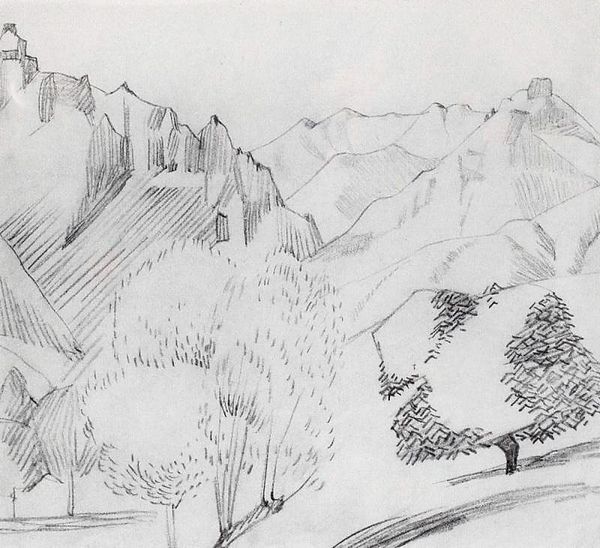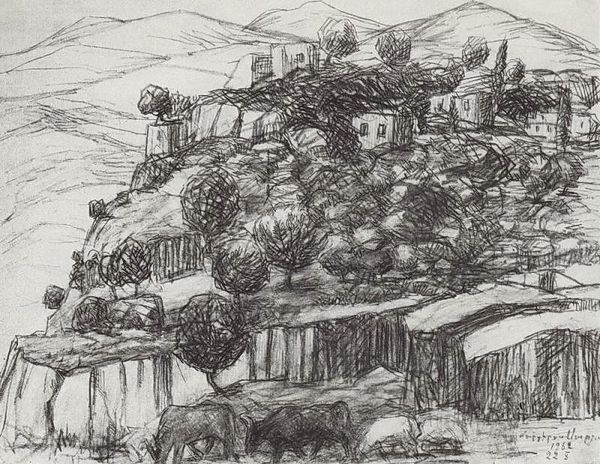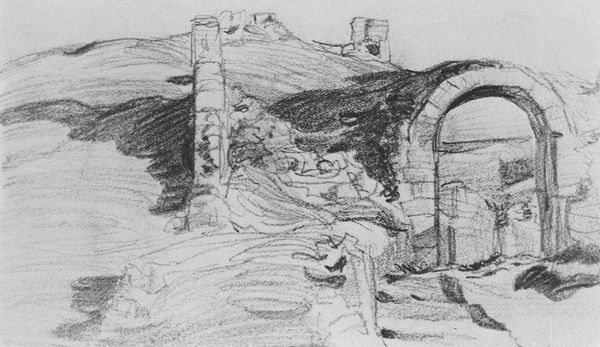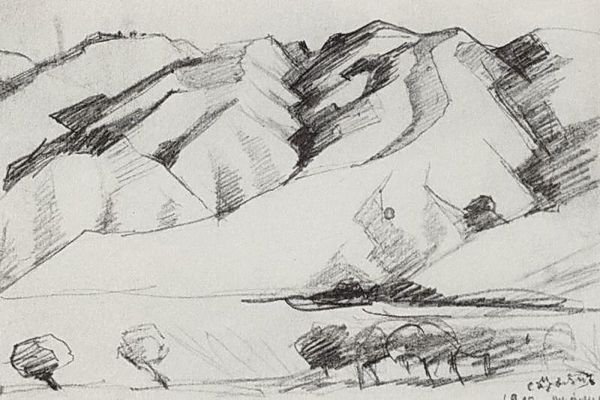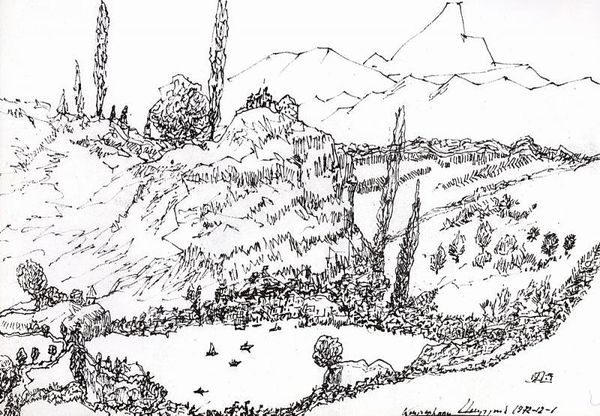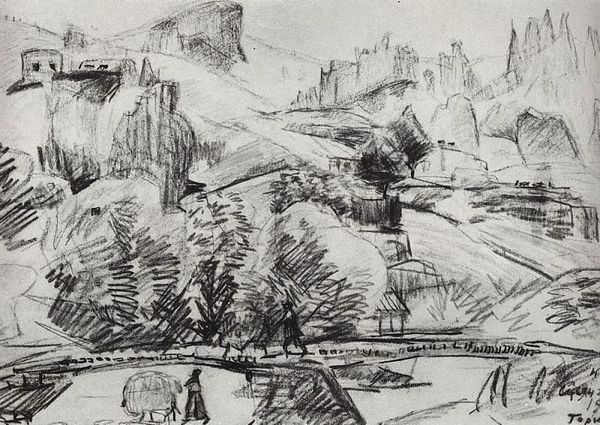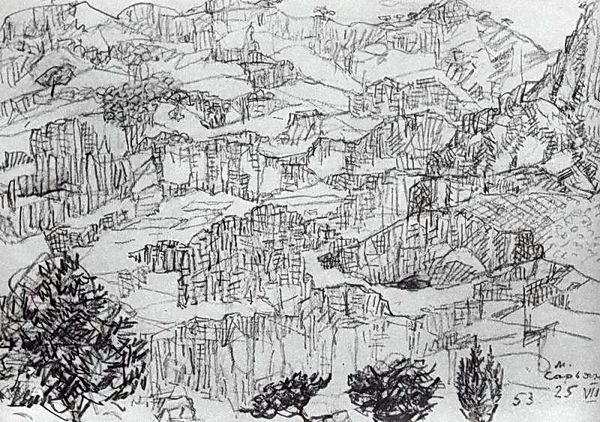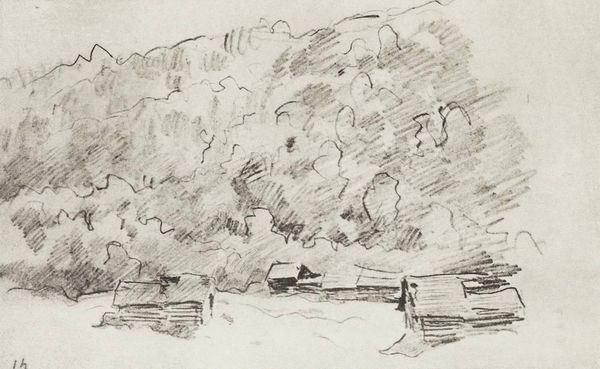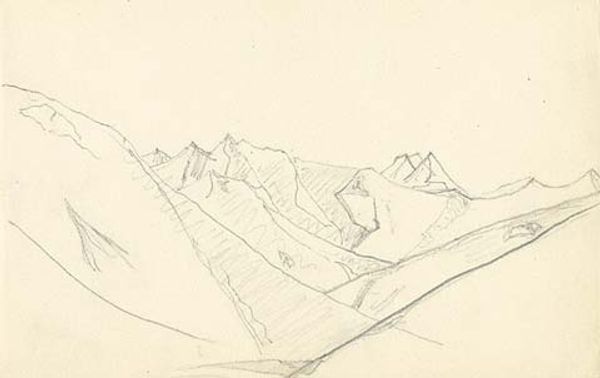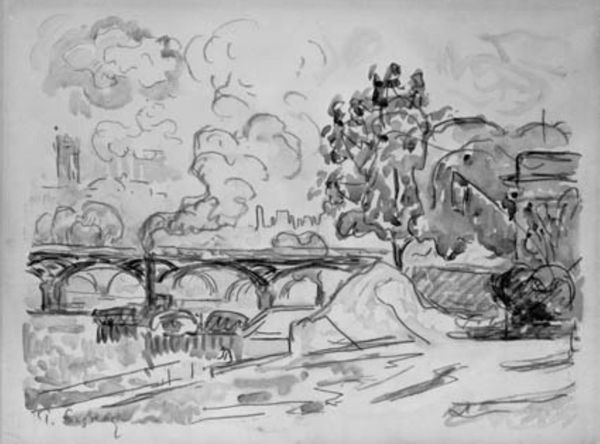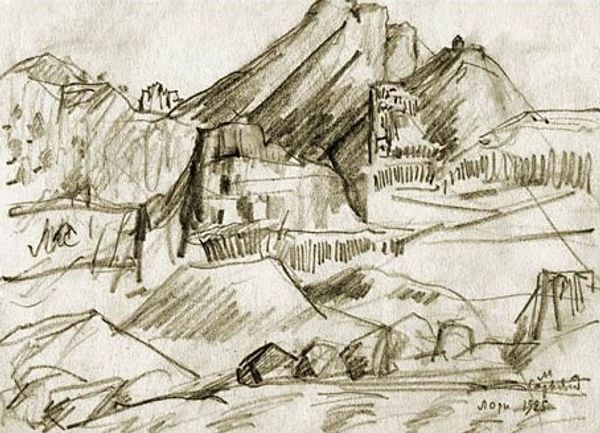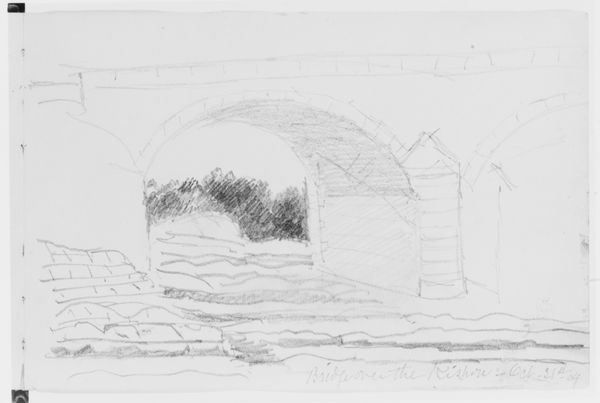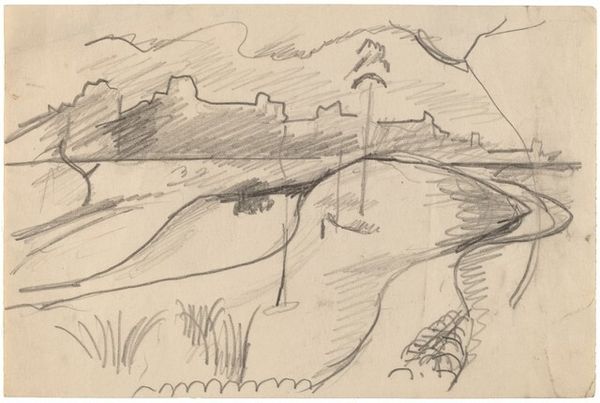
drawing, pencil
#
drawing
#
vehicle
#
landscape
#
form
#
road
#
geometric
#
sketch
#
pencil
#
arch
#
line
#
cityscape
#
modernism
#
realism
Copyright: Martiros Sarian,Fair Use
Curator: I find the image quite striking in its simplicity; there's an arresting sparseness. Editor: Indeed. This is Martiros Sarian's pencil drawing, "Ashtarak," created in 1933. We're looking at a landscape scene, focused around architectural forms. For me, Sarian's rendering of Ashtarak reflects broader currents of modernism influencing depictions of daily life. Curator: What grabs me is the interplay of light and shadow, creating geometric forms from a seemingly mundane village scene. The arches repeat throughout, which carry so much symbolism historically. Don't you agree? Editor: Absolutely, I see it too. Notice the prominent arch of the bridge, then echoed by those tunnel-like structures. Arches are classic symbols—gateways, transitions, stability... Here they appear almost fragmented, layered to frame movement. A laden cart is being led away from the two people standing at the rail on top of the bridge and tunnel. What story are they telling? Curator: Exactly! And how the light seems to both reveal and conceal. Given the period in which Sarian was working, we should consider the politics of representation, especially relating to Armenian identity. The pencil drawing as a medium can itself communicate simplicity, and urgency, especially in comparison to an oil or watercolor. Editor: An interesting thought, and something that reminds me of his body of works at large. Sarian's focus on landscape always hints at a deeper connection to cultural heritage and memory. His art returns, again and again, to those iconic geographical formations and architectural staples as almost visual markers of enduring presence, you know? Curator: Yes, it's as though he's capturing a moment of transition, a dialogue between past and future. Sarian captures this tension through form, and especially through his masterful use of perspective. Editor: For sure! What I’m left with is the persistence of symbolic structures in everyday settings. Curator: Ultimately, that is an insight on the complicated negotiation between personal and collective identity, and the historical and contemporary conditions that impact people's understanding of what the two people are thinking and sharing with one another while gazing off the bridge in a new Armenia.
Comments
No comments
Be the first to comment and join the conversation on the ultimate creative platform.
